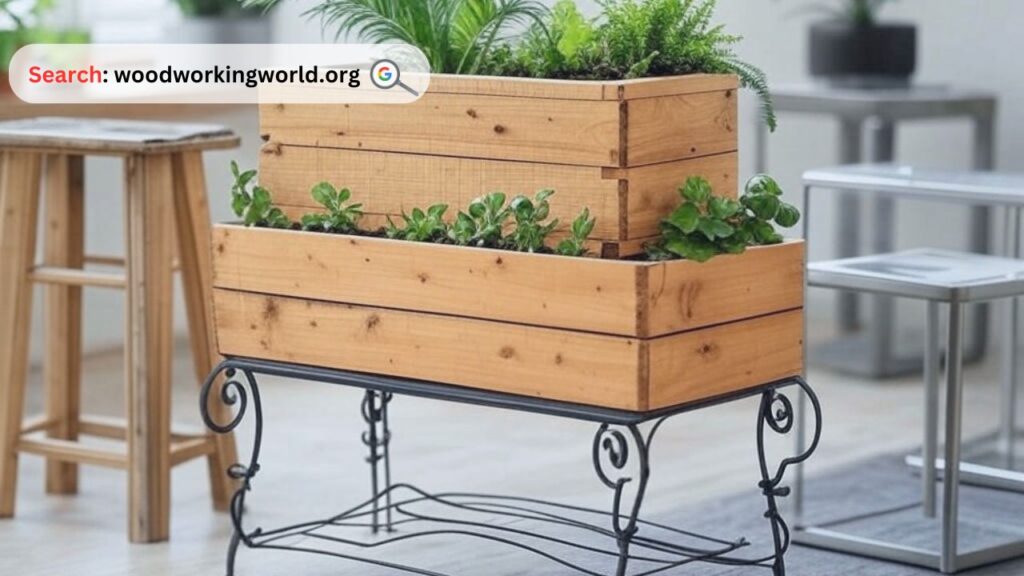Discover the magic of a multi-use plant litter box! Perfect for pet owners, this stylish design hides litter while keeping your space fresh and tidy.
In an era where sustainability and space optimization are essential, multi-functional products are becoming increasingly popular. One such innovation is the multi-use plant litter box—a creative solution that combines indoor gardening with pet-friendly functionality. Whether you’re a cat owner looking for an aesthetic way to conceal the litter box or a plant enthusiast wanting a multi-purpose planter, this setup offers the best of both worlds.

This comprehensive guide will walk you through the process of setting up your own plant litter box, compare different options, highlight the benefits, and answer frequently asked questions to help you make an informed decision.
Benefits of a Multi-Use Plant Litter Box
A plant litter box is more than just a convenient place for your cat to do its business. It offers numerous benefits, including:
- Space Efficiency: Ideal for small apartments or homes with limited space.
- Aesthetic Appeal: Hides the litter box inside a beautiful planter.
- Air Purification: Certain plants help reduce odors and purify indoor air.
- Privacy for Your Cat: Cats prefer secluded and private litter areas.
- Eco-Friendly Choice: Sustainable materials and design contribute to an environmentally conscious home.
- Odor Control: Activated carbon layers or natural plants help absorb and neutralize smells.
Build 16,000+ Projects with Step-by-Step Plans—No Big Workshop or Costly Tools Needed! Start Now!
Step-by-Step Guide: Setting Up a Multi-Use Plant Litter Box
Step 1: Choose the Right Container
The foundation of your multi-use litter box is the container. Choose a planter that is:
- Large Enough: Ensure your cat can comfortably move inside.
- Ventilated: Provides sufficient airflow to minimize moisture and odor buildup.
- Stylish and Functional: Matches your home decor while serving its dual purpose.
Popular choices include:
- Large wooden planters with hidden compartments.
- Plastic or resin pots with an open-bottom insert for litter.
- DIY wooden enclosures with removable tops.
Step 2: Select the Best Type of Litter
Not all litter types work well with a plant litter box. Consider these options:
| Litter Type | Benefits | Drawbacks |
|---|---|---|
| Clumping Clay | Easy to scoop, controls odor | Can be dusty and non-biodegradable |
| Pine Pellets | Natural, controls odor, less tracking | Takes time for cats to adjust |
| Silica Gel Crystals | Excellent odor control, low maintenance | Expensive, not always eco-friendly |
| Recycled Paper | Dust-free, eco-friendly | Requires frequent changes |
| Grass-Based | Biodegradable, natural scent | Higher cost, may attract bugs |
Step 3: Select Suitable Plants
Some plants are cat-safe and help neutralize odors. The best options include:
- Areca Palm (Dypsis lutescens) – Non-toxic, improves air quality.
- Boston Fern (Nephrolepis exaltata) – Absorbs toxins and maintains humidity.
- Spider Plant (Chlorophytum comosum) – Hardy, air-purifying, safe for cats.
- Parlor Palm (Chamaedorea elegans) – Elegant and easy to maintain.
- Cat Grass (Dactylis glomerata) – Provides entertainment and digestive benefits.
⚠️ Avoid toxic plants like lilies, aloe vera, and pothos, as they can be harmful to pets!
Step 4: Create Proper Drainage and Separation
To keep litter dry and maintain plant health, ensure adequate drainage:
- Use a false bottom or divider panel to separate the litter compartment from the soil.
- Add activated charcoal to absorb odors.
- Drill small ventilation holes for airflow.
Step 5: Assemble the Litter Box
- Place the chosen container in a well-ventilated area.
- Install the litter tray at the bottom.
- Add a separation panel to prevent soil from mixing with litter.
- Plant your selected cat-friendly greenery.
- Ensure easy access for your cat—either through a side opening or a liftable lid.
Step 6: Maintenance and Cleaning
Regular cleaning ensures hygiene and longevity:
- Daily: Scoop out clumps and solid waste.
- Weekly: Change the litter and wipe down the container.
- Monthly: Wash the entire setup, trim plants, and refresh activated charcoal.
Expert tips on Woodworking 🌿📦 Watch now!

Comparison: Store-Bought vs. DIY Plant Litter Boxes
| Feature | Store-Bought Litter Box | DIY Litter Box |
|---|---|---|
| Cost | $50 – $200 | $20 – $80 |
| Customization | Limited | High customization |
| Availability | Ready to use | Requires time to assemble |
| Materials | Varies (plastic, wood, resin) | Choice of sustainable materials |
| Durability | Depends on brand | Can be built to last |
Expert Tip
“Designing a multi-use litter box is a game-changer for pet owners who value both functionality and aesthetics. Choosing the right materials ensures long-term durability and odor control.” — Samantha Greene, Pet Interior Designer
FAQs (Frequently Asked Questions)
1. Is a plant litter box safe for my cat?
Yes, as long as you choose non-toxic plants and use pet-friendly materials for the container.
2. What’s the best way to reduce odors?
- Use odor-absorbing litter like silica gel or pine pellets.
- Incorporate activated charcoal layers.
- Ensure proper ventilation.
3. How often should I change the litter?
For optimal hygiene, scoop daily and replace litter every 1-2 weeks.
4. Can I use artificial plants instead of real ones?
Yes! Artificial plants eliminate maintenance concerns while still providing aesthetic appeal.
5. Will my cat actually use this litter box?
Most cats adapt quickly, but it’s best to introduce them gradually by placing familiar litter inside and letting them explore at their own pace.
6. What materials work best for a DIY version?
Wooden crates, large resin planters, and ventilated storage bins are excellent choices.
7. Where should I place my plant litter box?
A quiet, semi-private area with good airflow is ideal—like a corner of a living room or laundry room.

Conclusion
A multi-use plant litter box is an ingenious way to blend functionality with style, making it a must-have for eco-conscious pet owners. By following the steps outlined in this guide, you can create a discreet, aesthetically pleasing litter box that benefits both you and your cat.
Invest in a pre-made solution or get creative with a DIY version—either way, this setup ensures a cleaner, more attractive, and pet-friendly home.
Ready to transform your litter box experience? Start designing your plant litter box today! 🌿🐾
Click To Order Teds Woodworking With A 60-Money-back Guarantee From – Official Website